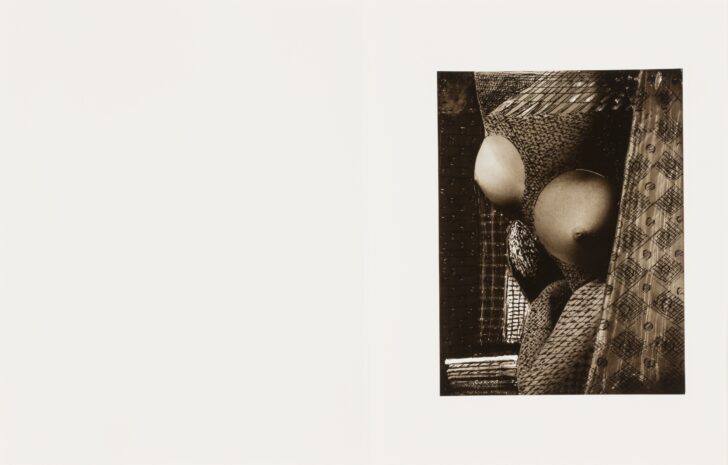Offering
Brassaï; E. Guillot; Galerie Les Contards

Description
Brassaï’s portfolio was executed in the medium of cliché-verre, a hybrid medium that combined aspects of drawing on a light-sensitized plate derived from photography. Unaware of earlier works in the medium by artists from the previous century, such as Corot and Daubigny, he returned to photographic plates he had executed of a female nude, allowing them to become a point of departure for subsequent images drawn from his imagination. He described these works as "released" forms, and considered their creation analogous to the process, pursued in his sculptures, of unearthing the hidden form from the surrounding stone. From these photographs, Brassaï created hybrid musical instruments and other images based on forms suggested by the female nude. As the artist stated in the foreword to the portfolio, "From the photographic image to the engravings (cliché-verres), realism was outweighed by oneirism. The photograph is now and then volatilized. At times some debris has survived: a piece of quivering breast, a foreshortened face, a leg, an arm. Enshrined in graphism this debris gives to our obsessions, to our dreams the flash of the instant, the breath of reality. Without doubt, different strata of our being were engaged in the processes of the photo and that of the engraving."
Label copy from exhibition "Dreamscapes: The Surrealist Impulse," August 22 - October 25, 1998
Subject Matter:
In 1932, after Brassaï left one of his glass plate negatives in Pablo Picasso's studio, Picasso drew directly onto Brassaï's negative. Picasso's action inspired the photographer to make marks on his own negatives, often scratching away the photographic image already exposed on the glass plates. He transformed photographs of female nudes with lines to produce intricate patterns, musical instruments, and new forms. Brassaï re-worked about 150 negatives from 1934-1935 and then published twelve images as the portfolio Transmutations in 1967. The title references the process of mutating the human body through the cliché-verre process. Brassaï described photography as his raw material, the point of departure for his transmutations, where realism gave way to fantasy.
Physical Description:
This image is one of twelve photographs from Brassaï's Transmutations portfolio. In this photograph, Brassaï has drawn on a negative of a female figure using the cliché-verre process. The resulting image portrays a female nude partially abstracted into geometric shapes.
Usage Rights:
If you are interested in using an image for a publication, please visit https://umma.umich.edu/request-image/ for more information and to fill out the online Image Rights and Reproductions Request Form.